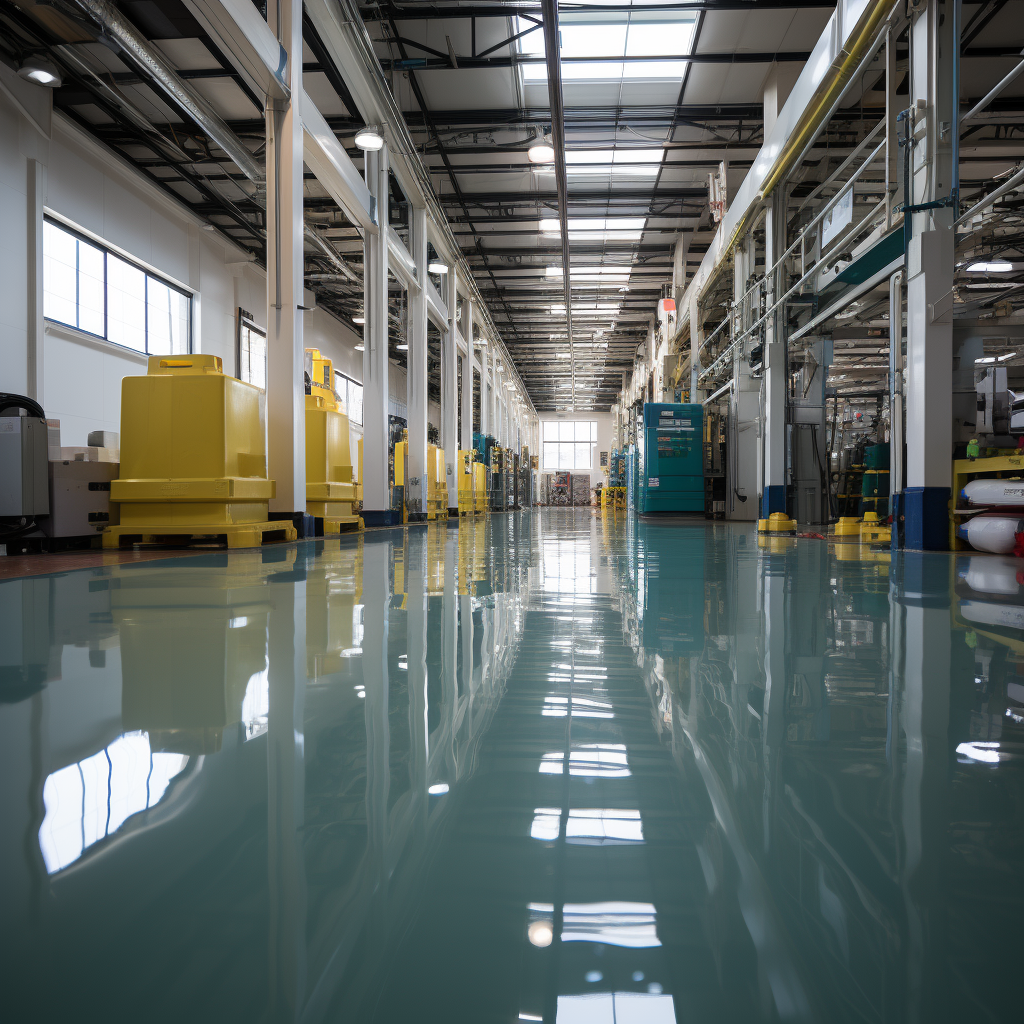Epoxy flooring has become an increasingly popular choice for both residential and commercial applications due to its durability, chemical resistance, and aesthetic appeal. A properly installed epoxy floor can last for many years, providing a seamless and low-maintenance surface. However, one crucial aspect of a successful epoxy flooring installation is the curing process. Ensuring that the epoxy floor has the appropriate cure time is vital for creating a long-lasting, high-performance floor.
In this comprehensive guide, we will explore the concept of cure time for epoxy floors, the factors that affect it, and its importance in achieving the desired results. By understanding the curing process and taking the necessary steps to ensure proper cure time, you can maximize the lifespan and effectiveness of your epoxy flooring investment.
What is cure time?
Cure time refers to the period it takes for an epoxy floor coating to transform from a liquid state to a solid, fully hardened surface. This process involves a chemical reaction between the epoxy resin and the hardener, which leads to the formation of a durable, chemically resistant, and seamless floor. The curing process is crucial in determining the final properties and performance of the epoxy floor, as it allows the material to achieve its maximum strength and adhesion to the substrate.
The duration of the cure time depends on several factors, such as the type of epoxy material used, the thickness of the application, and the ambient temperature and humidity. Understanding the curing process and considering these factors will help ensure that your epoxy floor achieves its optimal performance and durability.
Factors affecting cure time
There are various factors that can affect the cure time of Epoxy.
- Temperature: The ambient temperature plays a significant role in the curing process of epoxy flooring. Higher temperatures generally speed up the curing process, while lower temperatures slow it down. Most epoxy materials have an optimal temperature range, typically between 65°F and 85°F, for proper curing.
- Humidity: The amount of moisture in the air can also impact the cure time. High humidity can prolong the curing process and may lead to surface defects or improper bonding. It is essential to maintain a controlled environment with low humidity levels during the installation and curing of epoxy flooring.
- Type of epoxy material: Different epoxy materials have varying cure times, depending on their formulations. Fast-curing epoxy products are available, which can significantly reduce the cure time. However, these materials may also require more precise application techniques.
- Thickness of the epoxy layer: The thickness of the applied epoxy coating directly impacts the cure time. Thicker layers take longer to cure, while thinner layers cure more quickly. It is crucial to follow the manufacturer’s recommendations regarding the appropriate thickness for your specific epoxy product.
Stages of the epoxy curing process
Initial set time
This is the period when the epoxy starts to harden and lose its liquid state. During this stage, the epoxy becomes tacky and is no longer workable. The initial set time can range from a few minutes to several hours, depending on the epoxy formulation and environmental conditions.
Partial cure time
After the initial set time, the epoxy continues to harden and gain strength. However, it has not yet reached its full hardness or chemical resistance. At this stage, the epoxy floor may be safe to walk on but not ready for heavy traffic or exposure to chemicals. Partial cure time can range from a few hours to a couple of days.
Full cure time
This is the final stage of the curing process when the epoxy floor reaches its maximum hardness, strength, and chemical resistance. Once fully cured, the epoxy floor is ready for regular use, including exposure to heavy traffic and chemicals. Full cure time can vary from several days to a few weeks, depending on the epoxy material and the environmental conditions.
How to determine if your epoxy floor is fully cured
Visual inspection
A fully cured epoxy floor should appear uniform in color, texture, and gloss level. Any inconsistencies or cloudiness may indicate that the curing process is not yet complete.
Touch test
Gently press your finger onto the epoxy surface. If it leaves an indentation or feels tacky, the curing process is still ongoing. A fully cured epoxy floor should feel hard and not leave any marks when touched.
Hardness test
You can use a Shore D hardness tester or a similar device to assess the hardness of the epoxy floor. A fully cured epoxy floor should meet the hardness value specified by the manufacturer.
The Importance of Proper Preparation
Before the application of epoxy flooring, proper preparation of the surface is crucial. This process involves cleaning the floor thoroughly to remove any dirt, grease, or existing coatings. In some cases, the floor may need to be ground or shot-blasted to create a suitable surface for the epoxy to adhere to.
The preparation phase also includes repairing any cracks or damage to the existing floor. This step is vital because any imperfections can affect the final result of the epoxy flooring.
Remember, the better the preparation, the better the end result. While this process can be time-consuming, it’s a crucial step in ensuring a high-quality, long-lasting epoxy floor.
How long before you can drive on an epoxy garage floor?
One of the most common applications of epoxy flooring is in garages, where it provides a durable, easy-to-clean surface that can withstand the weight of vehicles. But how long should you wait before driving on your new epoxy garage floor?
While light foot traffic can typically be allowed after about 24 to 48 hours, you should wait a minimum of 5-7 days before driving a vehicle on the new epoxy surface. This waiting period allows the epoxy to fully cure, achieving maximum hardness and resistance.
Driving on the epoxy floor before it has fully cured can lead to tire marks and other damage. Therefore, it’s crucial to be patient and give your new floor the time it needs to harden fully.
How long do I have to wait before applying epoxy to new concrete?
If you’re planning to apply epoxy to a new concrete floor, you might be wondering how long you need to wait after the concrete has been poured.
Freshly poured concrete needs time to cure before any coatings can be applied. This curing process allows the concrete to harden and reach its full strength. Typically, you should wait at least 28 days after the concrete has been poured before applying epoxy.
This waiting period ensures that the concrete has had enough time to release any moisture that could interfere with the adhesion of the epoxy. Applying epoxy to damp concrete can lead to peeling, blistering, or other issues.
WIll winter temperatures affect the curing time?
Temperature plays a significant role in the curing time of epoxy flooring. As a rule of thumb, epoxy cures faster in warmer temperatures and slower in cooler temperatures.
During the winter months, when temperatures are lower, you can expect the curing time for epoxy flooring to be longer. The cold temperature slows down the chemical reaction between the epoxy resin and the hardener, extending the drying and curing process.
In addition to the temperature, winter often brings higher humidity levels, which can also affect the curing time. As mentioned earlier, epoxy flooring requires a low-humidity environment to cure properly.
Therefore, if you’re planning an epoxy flooring project during the winter months, it’s crucial to take these factors into account. You may need to adjust your timeline and expectations accordingly.
Remember, rushing the process can lead to a less durable floor. It’s always better to wait a little longer to ensure a high-quality, long-lasting result.

